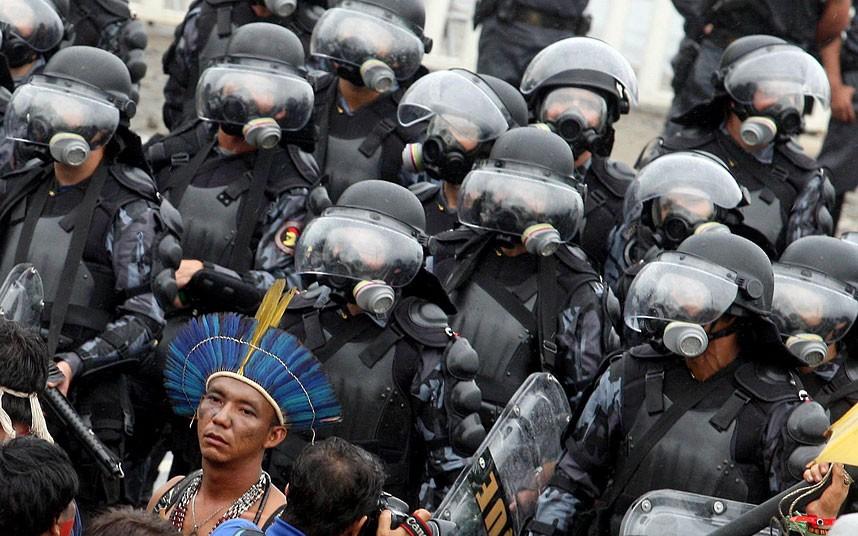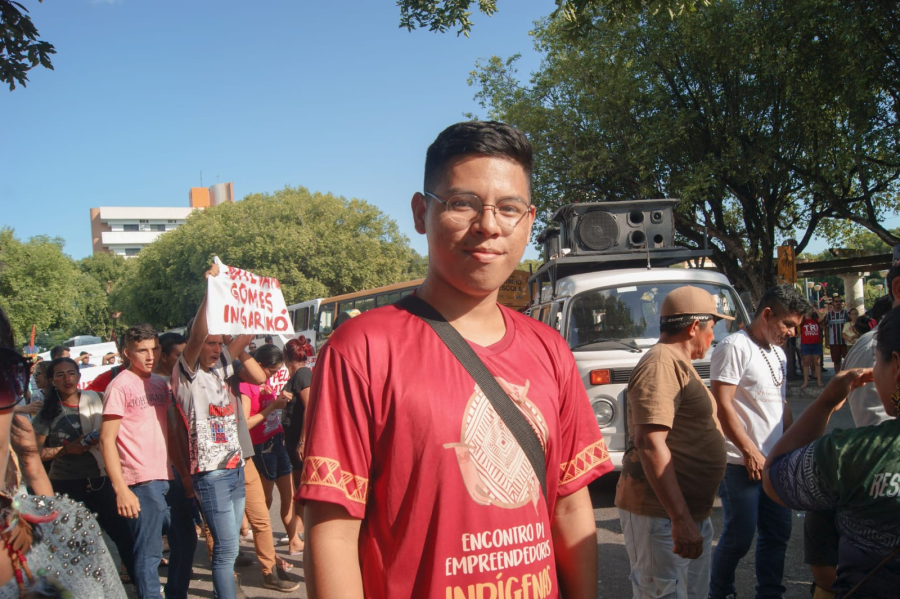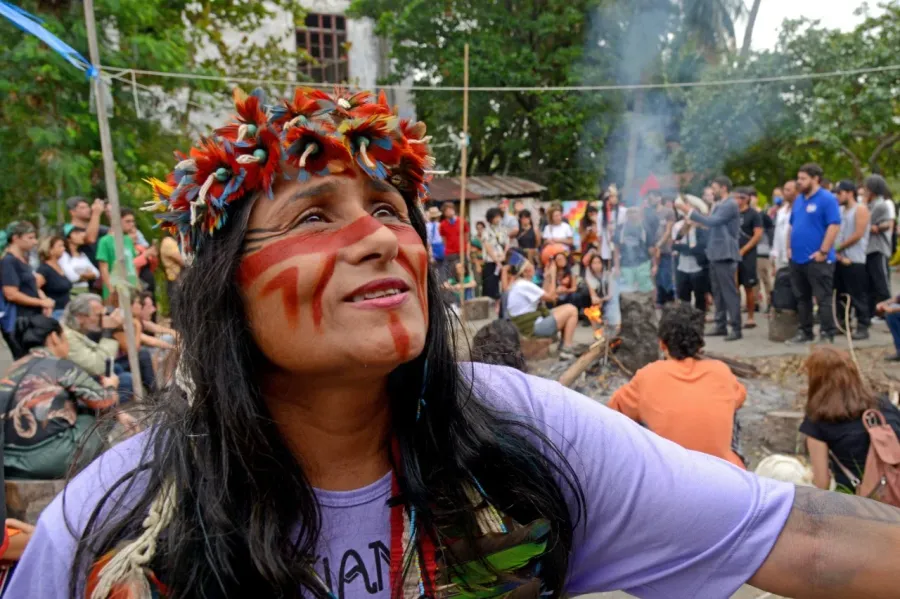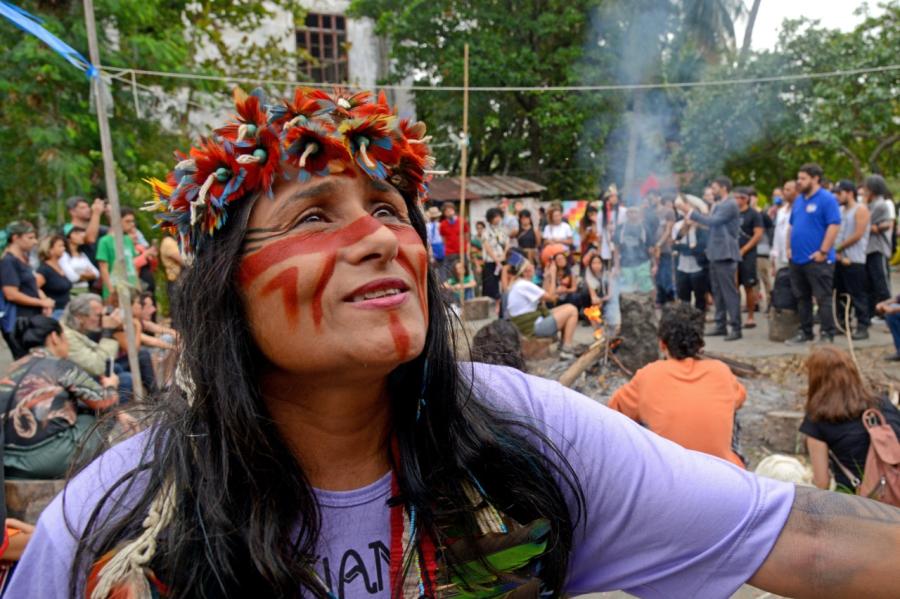
On October 1, 2013 hundreds of Indigenous and non-Indigenous protesters gathered in Brazil’s capital, Brasilia, to challenge a constitutional change that would allow encroachment by agribusinesses and extractive industries on Indigenous owned land.
The day marked the beginning of a week long campaign known as the National Indigenous Mobilization. Protestors set up camps in front of Congress, while others marched throughout the streets of Brasilia, São Paulo, Belém, Rio Branco, demonstrating traditional prayers, dances, and songs. Leaders of various tribes aired their grievances outside of Congress where they voiced their concerns about the potential threats to their people. Indigenous leaders stressed that these protests will be peaceful and that they are simply trying to start a dialogue with Congress in hopes of diminishing any plans of intrusion on Indigenous lands.
Indigenous Peoples are seeking to ensure the rights guaranteed in Article 231 of the country’s Constitution, which recognizes both, the cultural and territorial rights of Indigenous peoples based on their traditional heritage. Article 231 also establishes Indigenous people’s right to permanently live on their historical territories and secures the use of natural resources necessary for perpetuating their cultural integrity and wellbeing.
On October 2, the Brazilian police force used pepper spray in attempt to break the protests. This was followed by a renowned leader, Kayapó Chief Raoni, approaching the officers and greeting them individually, displaying true humility and immediate forgiveness.
This mobilization, assembled by the Articulation of Indigenous Peoples of Brazil (APIB) was also supported by Indigenous organizations such as the Socio-Environmental Institute (Instituto Socioambiental), the Indigenous missionary Council (Conselho Indigenista Mission), and the Center for Indigenous Work (Centro de Trabalho Indigenista) and other organizations such as Greenpeace, National Coordination of Quilombolas Communities, and Free Pass Movement (Movimento Passe Livre).
These protests are the culmination of requests made by Indigenous people and the government’s persistent denial of their rights. For years, the Native people have been suffering from the degradation of their lands by extractive and agro industries, especially industrial farming, dam-building, mining, road building and settlement construction.
Due to the recent agricultural boom, the government is now rewriting rules as to how indigenous groups will be awarded land and who will maintain ownership. This has obscured, and ultimately will reverse indigenous peoples rights to traditional lands.
“We are not going to stand by and watch our territories being stolen, our houses being invaded and our rivers being destroyed,” says Sonia Guajajara, a coordinator for APIB.
As a result of the protests, a small group of Indigenous leaders were allowed into the congressional building and talks lead to Congress suspending the proposed constitutional amendment PEC 215. PEC215 planned on assigning exclusive jurisdiction to Congress for the demarcation of Indigenous lands, including land that was previously determined to be indigenous owned.
The suspension of PEC 215 is a starting point for Brazil’s Indigenous Peoples. These recent protests have influenced the Brazilian government for the time being, but full implementation of Indigenous Peoples’ rights has yet to come.



